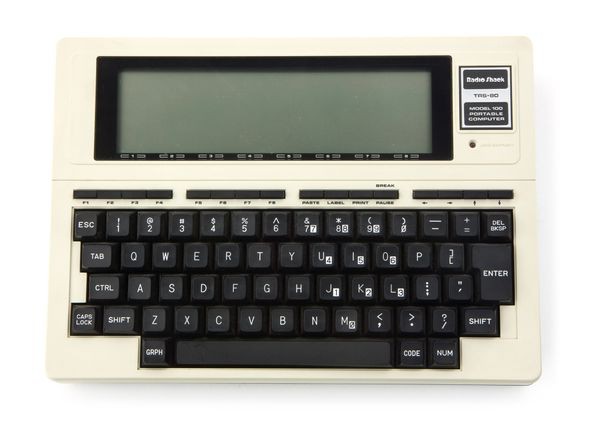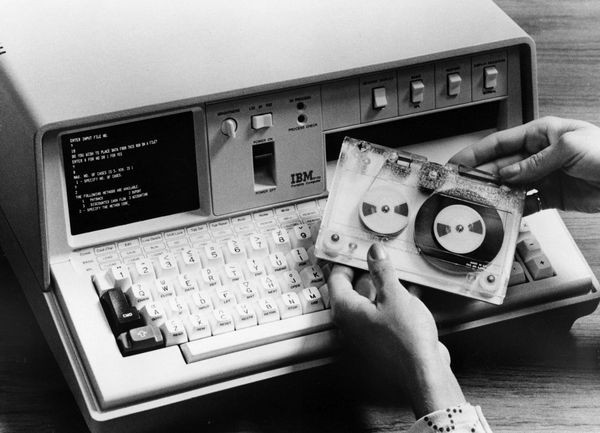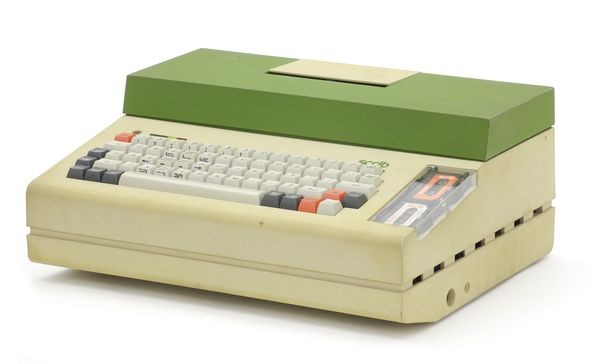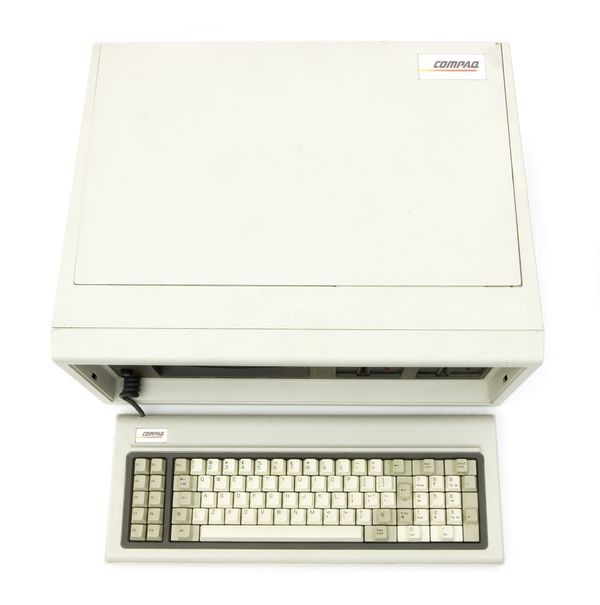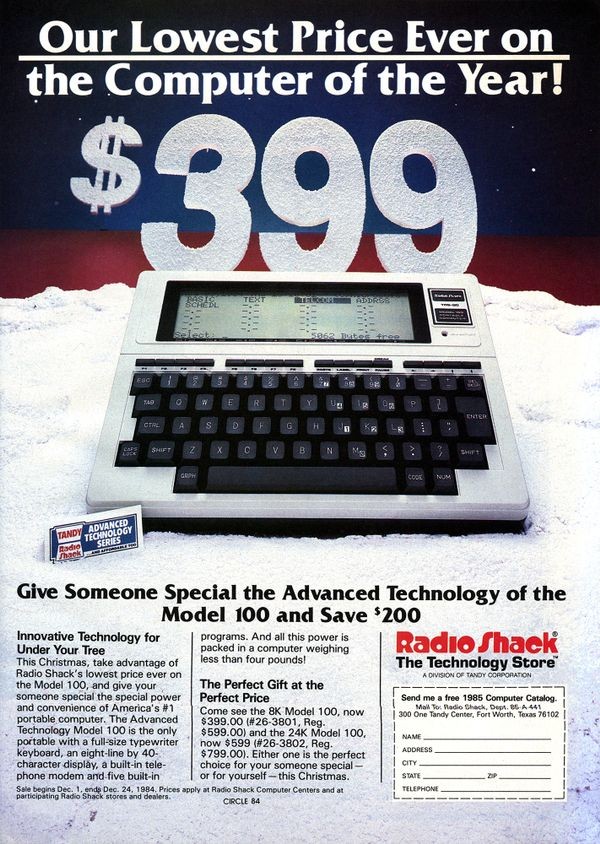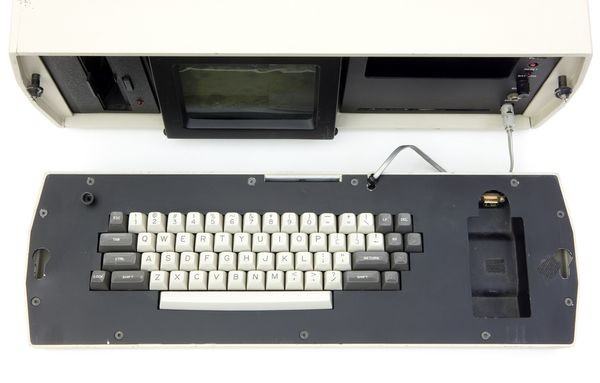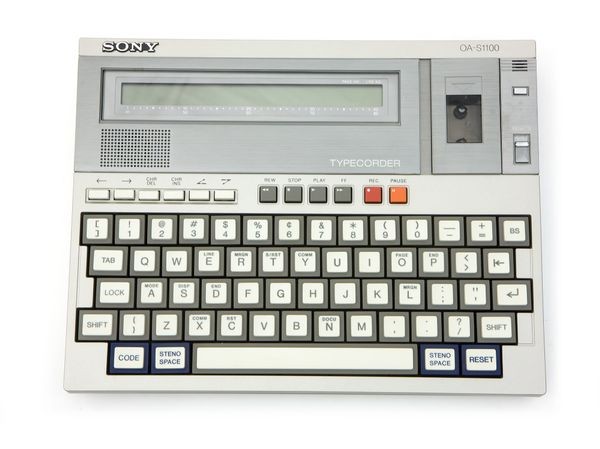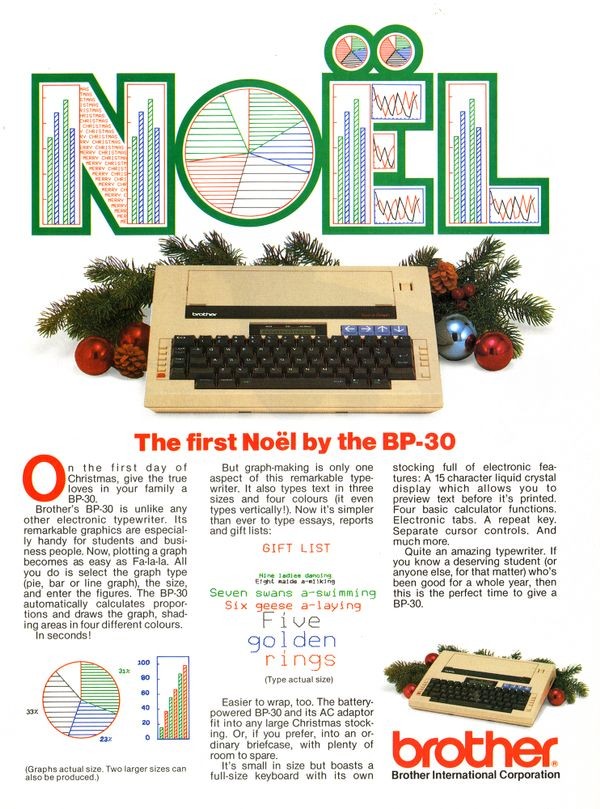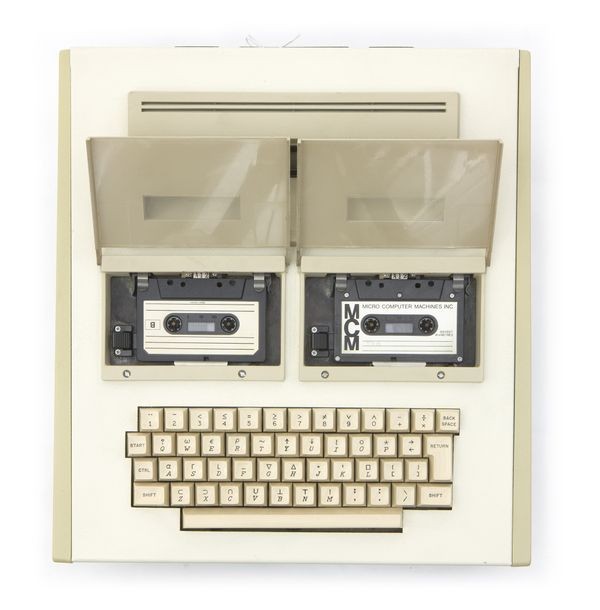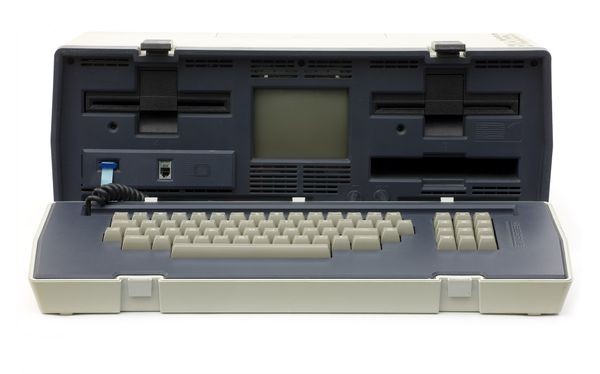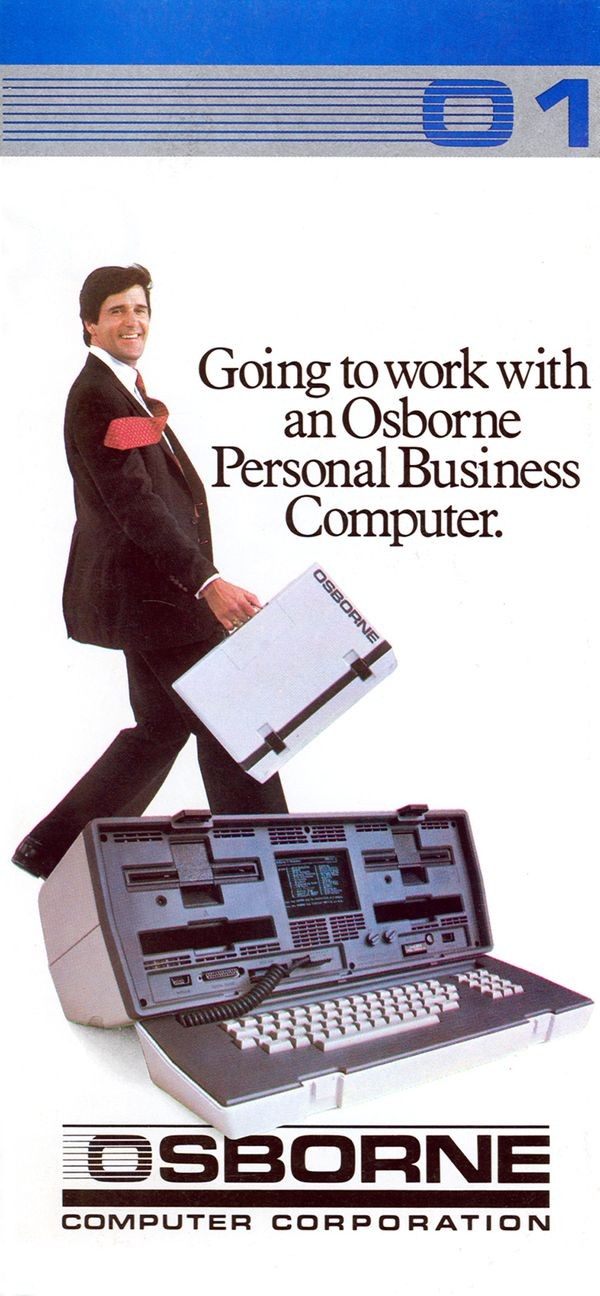The First Wave of Portables
Radio Shack TRS-80 Model 100
Beloved by journalists, this cheap but rugged machine had a built-in modem and could run for 20 hours on four AA batteries. It was the most successful “flat-top” design and sold over six million units.
The First Wave of Portables
Early “luggables,” like the Osborne and the Compaq, were heavy and expensive but had the functionality of desktop PCs. Although their heyday was short-lived, they helped popularize “computing to go.”
“Flat-tops” like the TRS-80 and Epson HX-20, provided simpler versions of popular PC programs, such as word processors and spreadsheets, while keeping the cost and weight down.
“Clamshell” devices from GRiD and Gavilan—flat with a hinged screen—entered the fray next, paving the way for a generation of “laptop computers.”
IBM 5100 portable computer
This sophisticated personal computer was released six years before the more famous “IBM PC.” It ran some IBM mainframe software, including the elegant APL programming language. Weighing 55 pounds, it was marginally portable.
View Artifact DetailScrib Portable
The Swiss-made Scrib was one of the earliest battery-powered portable computers. The display was vertical, as in today’s laptops, but it used a folding mirror, instead of a hinged screen.
View Artifact DetailCompaq Portable
The success of this Compaq Portable inspired many other early IBM-compatible portables. Compaq licensed MS-DOS from Microsoft and legally reverse-engineered IBM’s BIOS software. It sold more than $150M worth of these computers in their first year.
View Artifact DetailTRS-80 Model 100 advertisement
Aggressive discounting could bring the price of these machines below many handheld computers of the era and to less than a fifth of the cost of a high end desktop PC system.
View Artifact DetailXerox Notetaker
The Notetaker, which never became a commercial product, realized as much of Alan Kay’s Dynabook vision as 1976 technology allowed. Designed by Doug Fairbairn, it had a mouse and a touch-sensitive screen.
View Artifact DetailSony Typecorder
The Typecorder straddled the line between a dedicated word-processor used as typewriter replacement, and a complete computer. It was a favorite of journalists.
View Artifact DetailBrother word processor
A favorite of college students, electronic typewriters like this Brother model let typists correct text on a small screen before printing, instead of retyping or painting over errors with white correction fluid.
View Artifact DetailMCM/70 microcomputer
The MCM/70, a “flat-top” with the keyboard and screen together, was one of the first personal computers as well as one of the first portables. Instead of BASIC, the exotic APL programming language was built in.
View Artifact DetailThe Rise and Fall of the Osborne
Adam Osborne’s “Osborne 1” was the first commercially popular portable computer. But its success ended there.
Talk of a new model before it was ready hurt existing sales. This unfortunate maneuver, executed by others before and since, is now called “doing an Osborne.” Along with increasing competition, it eventually bankrupted the company.
Osborne 1
The successful Osborne 1 looked similar to the Xerox Notetaker. Thanks to five years of technological progress and the talent of designer Lee Felsenstein, it cost just $1,795 and weighed only 23.5 pounds.
View Artifact DetailPortable Companion magazine cover
This cover photo featuring Afghani Mujahideen fighters drew attention to the Osborne computer.
View Artifact DetailThe Future lies in designing and selling computers that people don't realize are computers at all.
Osborne 1 brochure
Osborne’s successful portable computer ran the popular CP/M operating system, came with a word-processor and other office programs, and sold for half the cost of comparable machines. Marketing materials for “luggables” such as the Osborne optimistically featured users carrying the computer as if it were as light as a paperback book.
View Artifact Detail